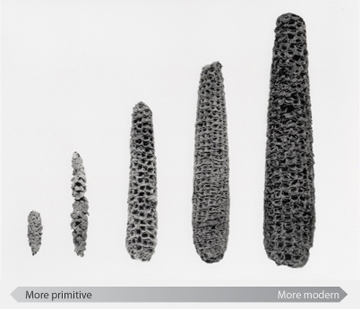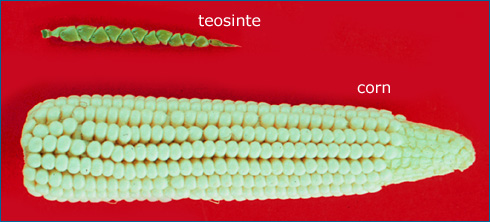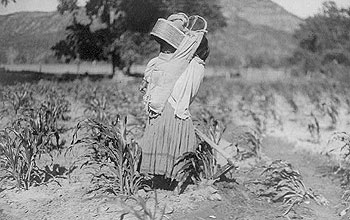GMO – Part 1
This is a series about genetically modified organisms. We anticipate there will be three parts. It will be comprehensive, but if you are truly interested in this field, we hope you enjoy this.
Genetically Modified Organisms are bad. Monsanto is evil. These crops are killing us.
Well, not really. This is not a simple topic – that is, it is not as simple as “this is bad and we shouldn’t do it” or “it’s not natural, so it must be bad.” Nor is it “corporate evil.”
GMO – Part 1
This is a series about genetically modified organisms. We anticipate there will be three parts. It will be comprehensive, but if you are truly interested in this field, we hope you enjoy this.
Genetically Modified Organisms are bad. Monsanto is evil. These crops are killing us.
Well, not really. This is not a simple topic – that is, it is not as simple as “this is bad and we shouldn’t do it” or “it’s not natural, so it must be bad.” Nor is it “corporate evil.”
My background about this topic:
I did genetic engineering as a graduate student at The University of Chicago. What we did with genetic engineering, people have been doing for thousands of years; the difference is we did it in a laboratory. You will see in the first part of this series how the majority of genetic engineering was done thousands of years before the field of genetics was understood by Europeans. My name is on a landmark paper where the first eukaryotic gene was inserted into a Herpes Simplex Virus and regulated like by the genetic regulation of the gene it replaced – obscure, but an important and first paper about the topic.
I left most bench research for a while to become a physician (I liked people better than petri dishes). As a physician who spends most of his time researching food, talking to patients about food – the politics of food fascinates me. We have shown that the single most important variable with success for surgery patients who have had weight loss surgery, is their willingness to cook. Patients who learn to cook, to appreciate food, at five years post surgery do much better than those who fall back into their habits.
Genetic engineering was started by Native Americans.
Corn is genetically engineered; there was no corn 10,000 years ago. Corn was genetically engineered by Native Americans, not done in a lab – it was done by methods that Europeans would discover, and call genetics. Corn had been already engineered thousands of years before the “father” of genetics, Gregor Mendel, was born, and the first Europeans were given this food from Columbus onward.

Thousands of years of selective breeding changed how corn looks. Photo from Robert S Peabody Museum of Archeology, Andover MASS – all rights reserved
It all began with a grass called Teosinte (pronounced “tA-O-’sin-tE”). Teosinte does not look like corn today, but the DNA shows they are alike, and it was this grass that Native Americans 10,000 years ago began to engineer. In fact it wasn’t until a few years ago, 2005, that modern molecular geneticists discovered that this grass, Teosinte, was the father of corn. For years people who study plants, botanists, assumed the evolutionary predecessor to had long since died out. And while Teosinte is widely spread throughout central America, it was not even considered in the same family as corn.
What modern molecular biology has done to corn is nothing compared to what the ancient Native Americans did.
The original ear of Teosinte is 2-3 inches long with 5-12 kernels. The kernels were hard, and most human teeth would break trying to eat them. Teosinte is inedible for people. Contrast Teosinte with modern corn with a cob that is 12 inches long, with over 500 kernels. The coating on the kernel was selectively bred from the rock-hard protecting seed to, now, where corn has an easily chewable, paper thin, but still indigestible membrane. This was breeding at its finest.
Ten thousand years ago there was not a plant that anyone would recognize as corn. In fact, there was no corn. By 4500 years ago corn was throughout all of North America. It allowed the Mayan people to go from a people who foraged, to a people who could stay and cultivate.

Teosinte is a hard, inedible kernel – this grass and corn share the same DNA, with some simple modifications one becomes the other
You can see from the photos how as time went on corn changed: both Teosinte and corn have the same number of chromosomes, they have the same genes that code for the same proteins. Teosinte and corn can be bred, because they are so close genetically. The difference between the grass, Teosinte, and modern corn is about five genes. Corn didn’t “evolve”: corn was “genetically” engineered by early Native Americans.
It all started in an area that we know today as El Salvador, where the Mayans discovered the plant in the mountains of Chalatenango. Recently a damn revealed a village in the area, which was one of the original four Lake Island villages of the Mayans, and on this land one can see the range of corn from the grass to the modern corn. If you hike there you can see places where the Mayans would grow special crops, where they would harvest the Teosinte with the kernels they could eat, and over time they would breed it and cross breed it until they had an agricultural system that was based on this plant.

The first genetic engineers cultivated a grass called Teosinte – in the region now known as El Salvador. Credit: Library of Congress, LC-USZ62-46945
So sacred was corn, that they called it the “grain of the gods.” To this day the people in Santa Ana, in western El Salvador, still plant little plots of primitive corn that they called something like “ulupiche”. This is not to eat but simply to please the ancestors. It is from these Mayans that corn was selectively bred, or genetically engineered for better taste, different colors, ability to withstand pests.
Thousands of years later in Europe and the United States:
For over 5000 years there was no change in corn, until the Europeans discovered the field of genetics, and began to reapply what the ancient Mayans had done. About 8000 years after the Mayans engineered Teosinte to corn, in 1865, Gregor Mendel presented a paper about his experiments with peas – and ultimately developed the early laws of genetics. Genetics became a new biologic field, and the first major publications about corn were in 1908 when a University of Chicago graduate, George Harrison Shull, began researching genetics using corn while at Cold Spring Harbor laboratory. His interest in maize was taking purebred lines and crossing them, and discovered they were more vigorous than the original strains. This increased vigor, and ability to increase yield meant a lot to farmers growing corn. As a result several companies developed corn and yearly would sell the seed to farmers. Some strains were developed and distributed to farmers without cost, such as The University of Wisconsin.
The hybrid corn was uniform, strong, and rapidly began to replace the open-field pollinated corn. This uniformity allowed for mechanized harvesting, and increased yield from 20-30 bushels per acre to over 120 by the year 2000. Currently, corn growers have changed emphasis from increased production to environmentally sound productions.
In early, pre-molecular biology, days, corn was used to study genetics. In those days biologists, like Shull, would breed corn to examine the determine genetics of the corn. The genes that were commonly manipulated either by geneticists, included the genes responsible for the color of corn, it can be yellow, white, blue, orange. In addition genes responsible for its resistance to pests, genes responsible for the taste of the corn (sweet corn is different than popcorn, which are different than corn grown for cattle, or that grown for fish).
More recently, using the techniques of modern molecular biology, the DNA has been mapped for the corn, and certain proteins have been allowed to be expressed more than others. Working in the laboratory, where the entire DNA sequence of maize is available, the genes can be manipulated to increase various proteins. How this is done, and whether this is good is for the next blog
All corn has been genetically engineered.
There is no corn on this earth that is not genetically modified. Corn was the example we used here, it can also be said for wheat, tomatoes, papaya, and a few other crops. All have been genetically modified – and if one begins to label GMO foods, then all those crops, and more, will need to have a label.
Here the debate gets ugly:
You may have seen photos on the internet: people show two ears of corn, one, they call GMO the other is “organic” and one is eaten by squirrels and the other is not. None of those photos has been truthful. Or the little girl who as a science project showed how bees avoided some genetic engineered produce. These are sad anecdotes from people who have an agenda. We don’t need anecdotes in this debate, we need truth. The truth is simple: all corn has been engineered for years. We will answer some of the claims which are valid, and some are irrational.
(a) Should they be labelled – no reason not to be. This may be a problem, because we have to decide at what point do we label – which crops, and what. Since all corn is new from humans harvesting, it would all have to be labelled.
(b) It is bad for diversity. All crops today are uniform, and yes, they represent a non-biodiverse species. This has led to problems – the Irish famine, for example – but that wasn’t because of molecular genetic manipulation, that was how potato crops are. All corn, all wheat, all soy: when you look you will see single hybrid lines. Think of Teosinte – it had far more biodiversity than corn. The wild grass could adapt to different places, but in choosing the genes to express, corn now has a wider range than Teosinte ever could imagine. Some might say that this grass has done a good job of getting humans to spread it around the globe.
(c) It can lead to greater famine and weeds. The constant threat since humans began to cultivate plants was the threat of famine, or pests, or weeds that would wipe out crops. GMO does not change this. Having a modification of a plant can help it.
(d) Animals avoid GMO food. Most of the photographs have been faked. But remember, most GMO foods you will avoid also. You won’t be eating the vast majority of corn because it is meant for animal feed. If you tried to eat that you would find it unpleasant. You would eat sweet corn, but a cow would avoid that.
(e) The genes can get into and affect humans. This is one of those things that is “possible” but not probable. Any bit of DNA anywhere in the world can infect humans – but it is highly unlikely. The GMO crops do not change that simple fact. Any DNA from any organism can get into our DNA – it simply doesn’t happen that ofen.
(f) GMO leads to increased use of herbicides and pesticides that are bad for the environment. Turns out that most agriculture isn’t that great for the environment. A large farming system depends on chemicals to fertilize it, to replenish nitrogen and phosphorus, and to get rid of weeds as well as any molds, fungus, insects, or parasites that will consume the harvest. This is not new – this is the state of agriculture. The good news is that they are starting to work on growing things differently. More about this later. The idea behind many of the crops is to have those that are resistent not to the pesticides and herbicides, but to the pests and the weeds themselves.
BUT IT’S NOT THE SAME:
Someone is bound to say that there is a difference between what we do in the laboratory and what the Mayans did to Teosinte. There isn’t. Not one bit. There might even be those among you who wear tin hats who would say – an advanced civilization did genetic engineering – except we have the ruins to show the Mayans did in fact do this. It is exactly the same. We are just more efficient at it.
REFERENCES:
A lovely view of the archeology of the area see this: http://inclusivebusiness.typepad.com/indigenous_elsalvador/corn-and-teosinte/
The NSF announcement of Teosinte as corn: http://www.nsf.gov/news/news_summ.jsp?cntn_id=104207
90 years ago: the beginning of hybrid maize. Crow JF. Genetics. 1998 Mar;148(3):923-8. PMID: 9539413







